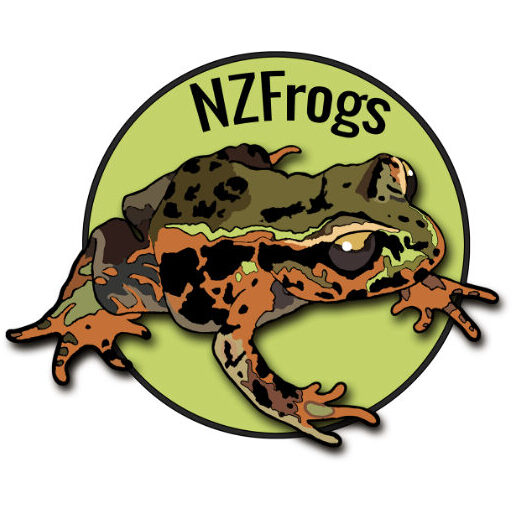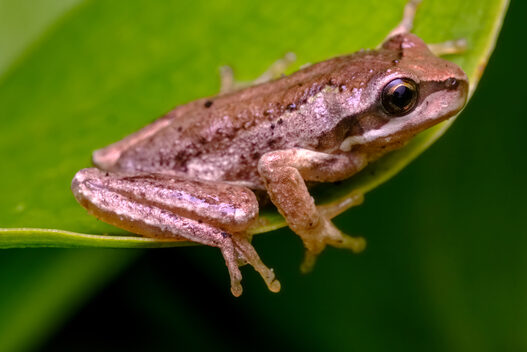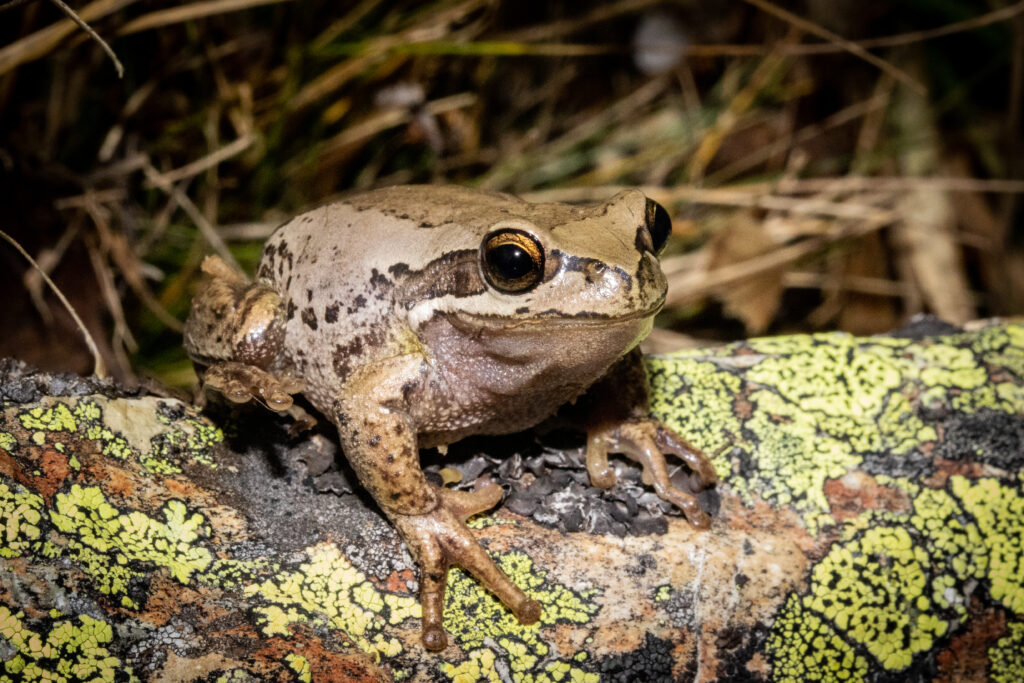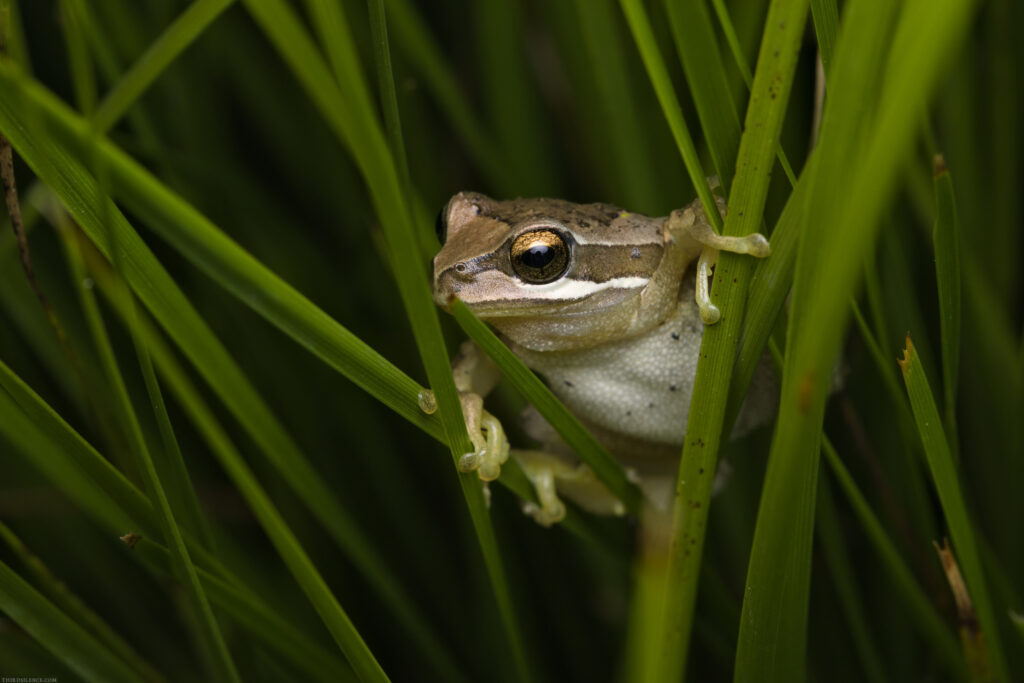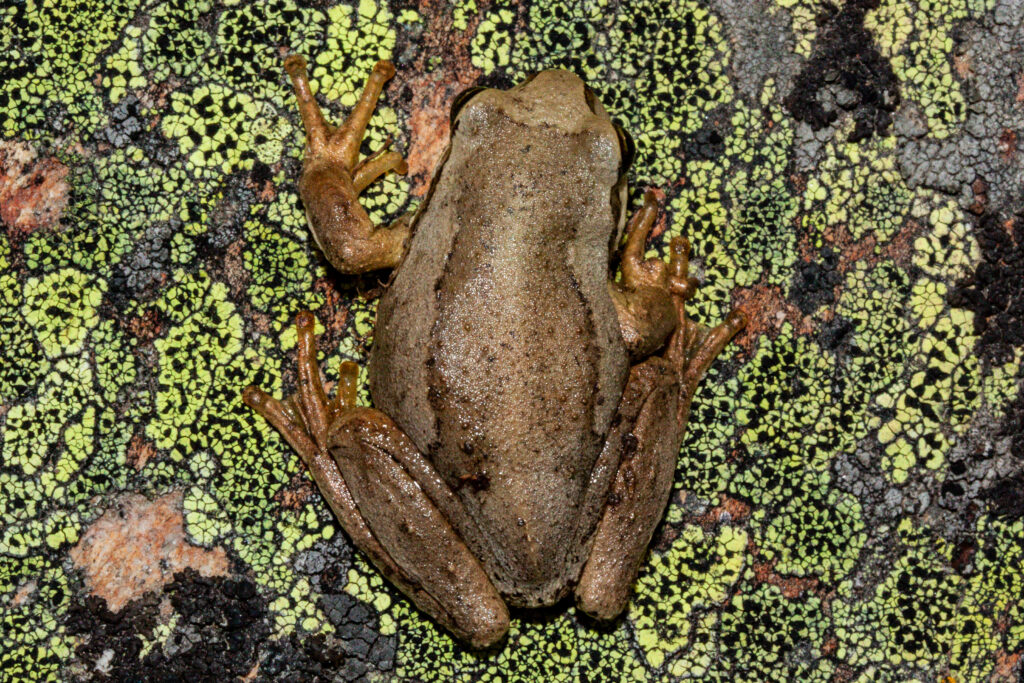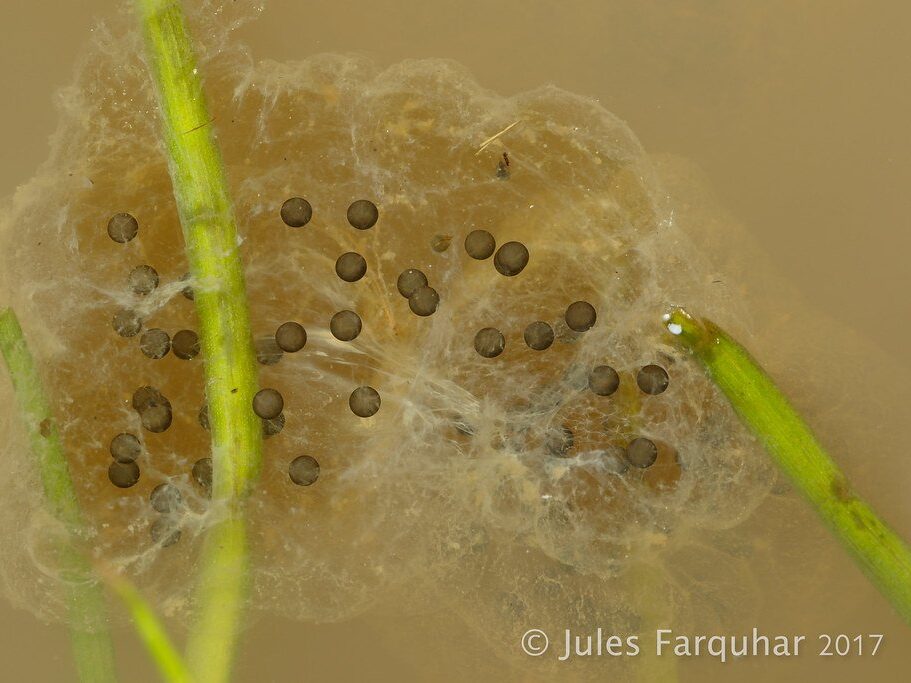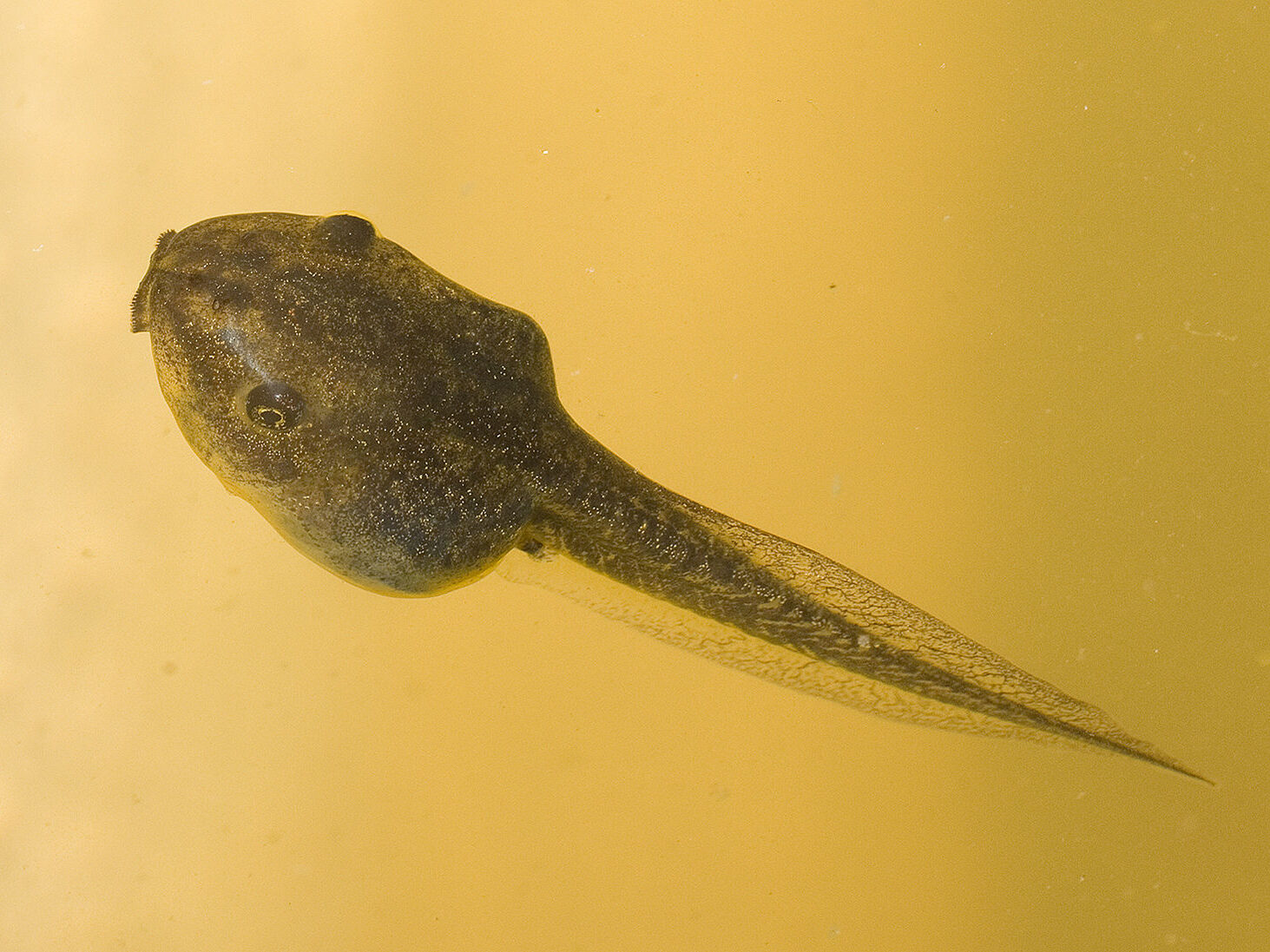The brown tree frog, Litoria ewingii (sometimes referred to as the whistling tree frog) is thought to have been released into New Zealand on only one occasion. Frogs and tadpoles were caught in Tasmania and released down a drain pipe in Greymouth, by W. Perkins in 1875.
Subsequently brown tree frogs were translocated from Greymouth to the Manawatu. It has now spread across almost the entire country including the South and Stewart Islands and most of the North Island but is notably absent from the Bay of Plenty. The wide distribution of this species is probably a result of human-mediated liberations, both on purpose and by accident. However, this frog’s extraordinary ability to survive freezing may have helped it survive the cold winters of the Southern South Island and alpine areas >1000 metres above sea level.
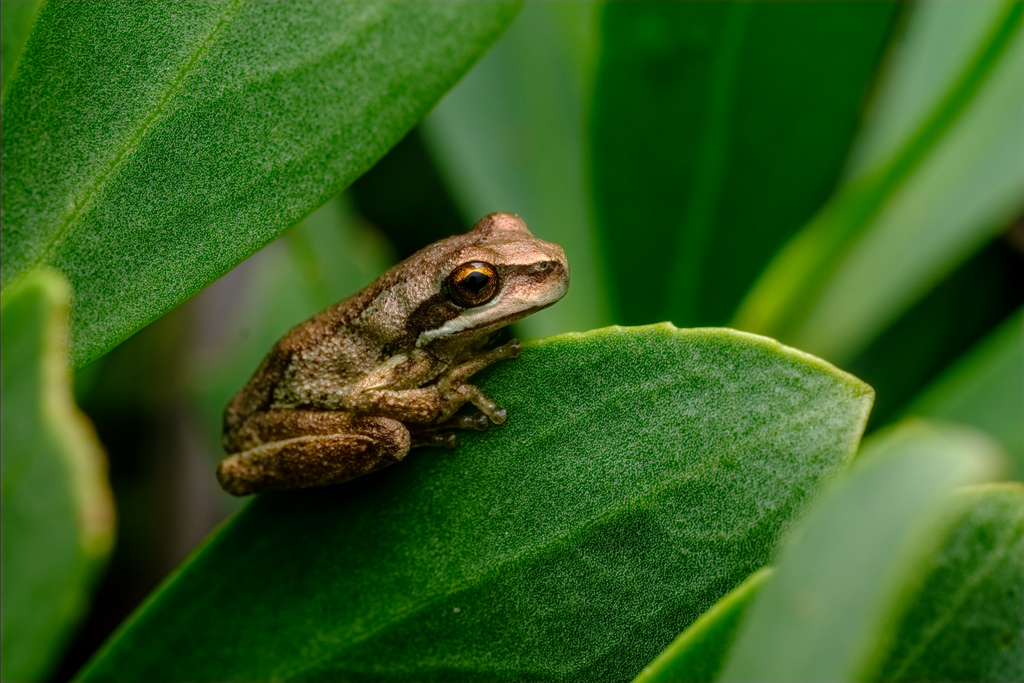
FUN FACT Phil Bishop, NZFrogs founder, once found an individual frozen in Naseby!
Description
Brown tree frogs are generally a light brown colour, although this may contrast on a white/grey to a dark brown background. They have a dark stripe along the jawline from the armpit to below the eye and sometimes to the end of the snout. Most individuals have a lighter patch on the top of the head, extending from between the eyes to the tip of the snout. The belly and throat are usually white or cream and the undersides of the thighs are bright orange. The tympanum (eardrum) is quite distinct and easily visible, this characteristic alone separates this species from our native Leiopelma species (which lack an eardrum). The fingers and toes have suckers that are used for climbing, and webbing is usually absent.
How big are these frogs?
Frog body size is generally measured as snout to vent length (SVL). SVL is the distance from their snout (tip of their nose) to their vent (bottom). Brown tree frogs are generally quite small with a SVL of 30-50 mm long, males are smaller than females.
Call
The call of the brown tree frog is characteristic and is distinctly cricket-like. Their call can be described as a high-pitched trill repeated 5 or 6 times with an initial longer note, sounding a bit like “weeeeep-eeep-eeep-eeep-eeep-eeep”. Although this species is often referred to as the whistling tree frog, the common name, brown tree frog, is preferable as the call doesn’t sound anything like a whistle!
Listen to their call here on the Australian FrogID page
Breeding
Brown tree frogs can breed throughout the year in favourable conditions. During periods of rain males can be heard calling (even in mid-winter) and tadpoles can be found in most months of the year, even when frosty. Males usually call from concealed positions within vegetation around ponds and streams. These frogs have external fertilisation and clumps of eggs are laid underwater attached to sticks. The tadpoles are black when they first hatch and gradually turn brown as they get older. The tadpoles are quite difficult to tell apart from those of the other introduced species.
References
Burns, Rhys J., et al.(2017) Conservation status of New Zealand amphibians. Wellington: Publishing Team, Department of Conservation, 2018.
Burns, R. J., et al,. (2018). Conservation status of New Zealand amphibians, 2017. Wellington: Publishing Team, Department of Conservation.
Cree, A. (1984). Breeding biology, respiration, and larval development of two introduced frogs (Litoria raniformis and L. ewingi). New Zealand Journal of Zoology, 11(2), 179-187.
Druett, J. (1983) Exotic intruders. Heinemann. Ch13, 252.
Hunter, D., & Waudby, H. P. (2017). Frogs of south-west NSW. Office of Environment and Heritage, Sydney. 26-27.
Purdie, S. (2022). A naturalist’s guide to the reptiles & amphibians of New Zealand (pp. 158). John Beaufoy Publishing.
Rexer-Huber, K. M., Bishop, P. J., & Wharton, D. A. (2011). Skin ice nucleators and glycerol in the freezing-tolerant frog Litoria ewingii. Journal of Comparative Physiology B, 181, 781-792.
